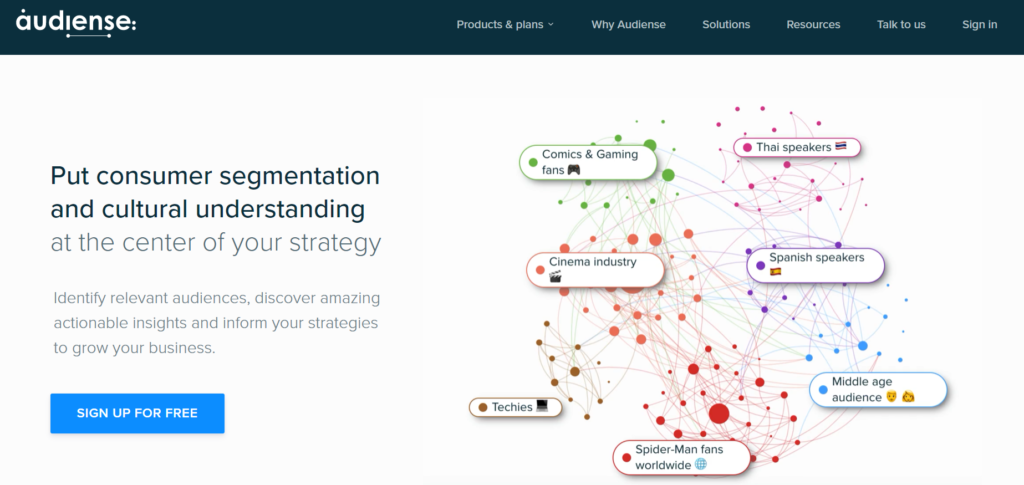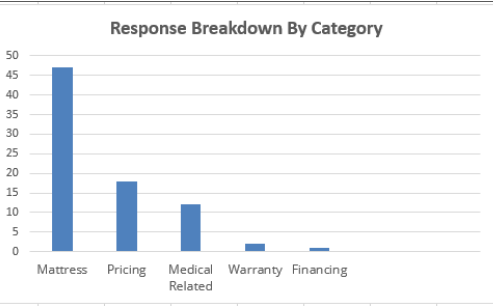As Director of Conversion Rate Optimization here at Ignite Visibility, anything that increases conversions is my jam.
Since they’re so effective, you can imagine that heatmapping and onsite surveys are some of my favorite tools in the toolbox.
A heatmap analysis can help you better understand your audience, far beyond your basic KPIs. Here’s the rundown on how to up the ante for landing page conversions.

How to Use Heatmapping to Increase Landing
What is Heatmapping?
Many conversion metrics tell us what’s happening, and when.
Meanwhile, heatmapping and other tools can help tell us why these conversion events happened.
They do so by providing a visual display of density marks where visitors spend the most time on landing pages. This could be above or below the fold. It can show us what parts of the page are the most popular, or where users get confused.
Why Heatmapping Helps
Heatmapping can answer questions like:
- Which content are visitors finding helpful?
- Are visitors seeing our main selling points, social proof, contact forms, and other crucial pages?
- Are site visitors reaching the bottom of the page?
- Are they dropping off the page?
Ultimately, knowing the reason behind certain events helps marketers better understand their audience and users—which can lead to heightened conversion rates on landing pages.
And while a heatmap isn’t the full picture, it allows us to fill in the gaps of information, which helps us achieve better results for our clients.
How to Perform a Heatmap Analysis Using Different Apps
Most heatmap analysis apps offer three different views of heatmaps:
- Click: This shows which elements of the web page visitors are clicking on.
- Scroll: This shows how far down the page visitors are scrolling.
- Move: This shows where visitors are moving their mouse on the page. It offers insights as to where visitors’ attention is focused as they navigate throughout the page.
At Ignite Visibility, our tool of choice for analyzing on-page behavior is called Hotjar.

Image Source: Hotjar Heatmap Analysis
You can also download and share heatmaps to share with your team or clientele. Another interesting feature is that heatmaps split by device type, so you can compare and contrast desktop, tablet and mobile users’ experiences.
As awesome as it is, Hotjar isn’t the only app giving heatmap examples.
Another option is Tableau. Their heatmap is part of their embedded analytics offering, but it’s not the best for these purposes because you have to input the data yourself.
Fullstory is a good option for those who like the numerous integrations. Their intelligent heatmaps work in tandem with high-fi session replay to show website managers or agencies how users are interacting with the site in question.
Smartlook works with both site pages and mobile apps, which is a cool feature. They have three overlays (click, move and scroll) just like Hotjar. The data is retroactive and you can compare and contrast visitors. Public links are available for you to download and share with teammates or clients.
There are even more options, like Mouseflow, Figpii, Lucky Orange and CrazyEgg. That’s a lot to choose from, but let me emphasize something. As Ignite’s CRO Director, myself and my team are partial to Hotjar.
Heatmap Examples in the Real World
Audiense is a company that helps identify target audiences for businesses.

Image Source: Audiense
They experienced a drop in conversions, so they used Hotjar’s heatmaps to reorganize and reallocate their landing page space. It worked, and they brought their conversion rate back up to a healthy level.
Here’s a heatmap example from an Ignite Visibility client. It’s for a page consisting of a list of common questions on a website about loans:

Heatmap Analysis Example
You can see from the blue marks that most of the activity is centered around jumbo and conforming loans.
What are some actionable takeaways from this example?
Since this question is the most popular, you can move it to the top of the list. Alternatively, you can develop a content section around it so it’s not hidden behind a click-to-reveal (because less clicks for popular web content make it easier for visitors to locate).
Hotjar Also Uses On-site Surveys
In addition to heatmapping, Hotjar also has the capability of using on-site polls. You’re probably familiar with these types of pop-ups (they’re pretty popular!).
These on-site surveys usually ask open-ended questions like:
- Are you finding the information you were looking for?
- Is anything stopping you from converting today?
Here’s an example of what one might look like:

Hotjar On-site Surveys Customizable Widget
This type of data is qualitative, not quantitative. On Hotjar, you can select from a few different question types (long text answer, short text answer, radio buttons, checkboxes or net promoter score). You can also change the settings for when the poll triggers on the page, either immediately after a page loads, a set number of seconds afterward, when they’re about to abandon or when they scroll to the fold.
It’s valuable because it captures visitor feedback right then and there. They’re still in the moment and their questions about your business, product or service are still top of mind.
This feature provides an opportunity for users to voice their concerns before they forget about it entirely, and it doesn’t involve opening an email and clicking a link.
Not everyone will go out of their way to answer this question. Some people will exit the page regardless.
However, there’s something to be said for those that do choose to type in their question. After all, if they’re wondering about a particular topic, it’s highly likely that other site visitors are, too. This is especially true for websites with a lot of visitors.
Here’s an example from one of Ignite Visibility’s own clients.
One of our clients is in the bedding industry. We ran a pop-up poll to help us improve their website’s on-page experience. Here’s the question we asked visitors:
“Are you finding the information that you’re looking for?”
With open-ended questions, you’re going to get a variety of answers. To help make the data more actionable, we boiled these answers down to five key categories:
- Mattress
- Pricing
- Medical related
- Warranty
- Financing
Here are the results of our on-site survey through Hotjar:

On-site Survey Analysis
This is super interesting given the context of our digital marketing efforts with our bedding client. Originally, we thought that our landing page had enough information about the mattress. We didn’t want to bombard visitors with too much copy or turn them off from clicking anything.
But as you can see from the on-site survey results, most of the questions we received were about mattresses! So what does this tell us?
Namely, it tells us that we could indeed do with more copy on the landing page.
Then we broke the analysis down the mattress category further. We did this by dissecting the questions within the sector and organizing new content around those questions.
Using this approach, we went ahead and added multiple short paragraphs of informational copy that answered the key questions their visitors had.
An increase of time on page and an increase in conversion rate.
It’s exactly what we were hoping would happen, and it worked! Though I’m not surprised, because the steps we took aligned with the notion of providing useful, easily accessible content to the company’s specific audience.
According to Hotjar, Hubspot Academy used their on-site poll service, which resulted in a 10% conversion rate increase. Irish airline Ryanair also used the tool and found it useful.
Another feature of Hotjar is this: You can literally replay sessions that real visitors took on your site. Selecting a few of these visits and taking notes on them could provide you with additional context about your audience that you may not have otherwise acquired.
The moral of the story here is this: If you’re not using a tool like Hotjar, you could be missing out on a ton of actionable data.
These Heatmap Examples Help Us Get to the Core Of Landing Page Conversions
Conversion metrics like traffic sources, page on time, bounce rate, interactions per visit and so much more can tell us a lot.
But there’s something about heatmapping that can do what these otherwise-valuable key performance indicators cannot. They practically follow a person’s eyes (or mousepad) to show a bit more about their thought process.
Much of it is unconscious, but it just goes to show that conversions are not all about the numbers. Looking at a heatmap analysis can help you cater to your visitors. While they aren’t all the same, you can deduce what most people do, and act accordingly.
As for the on-site polls, that’s yet another service from Hotjar that the Ignite Visibility team (myself included) love to use in the right time and place. It’s not something to implement haphazardly, but it’s a smart service to pull out as needed.
